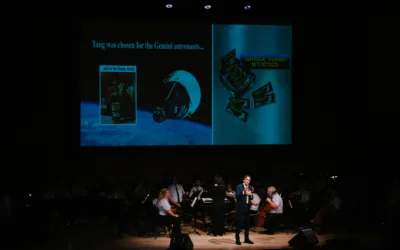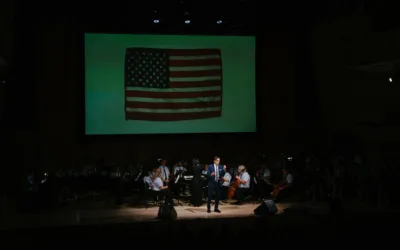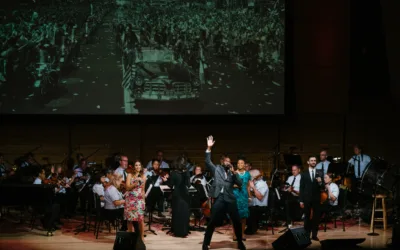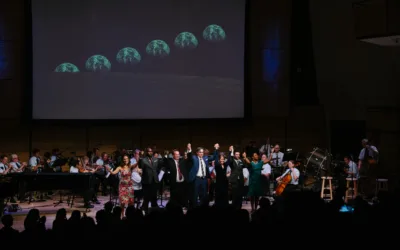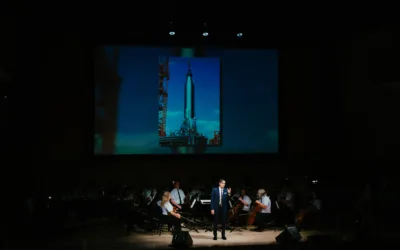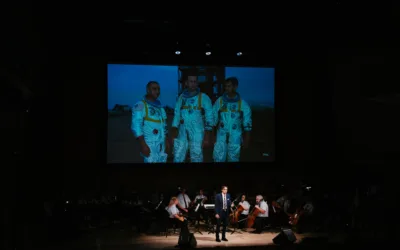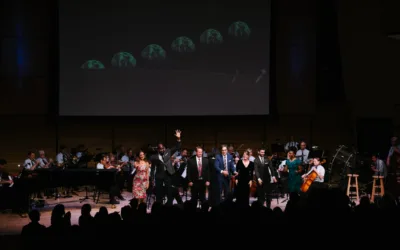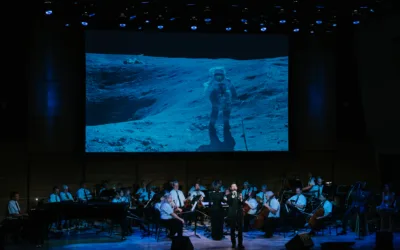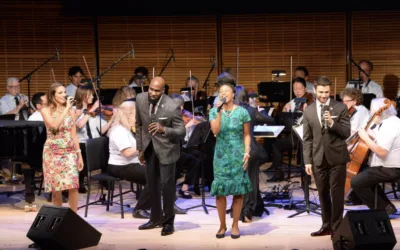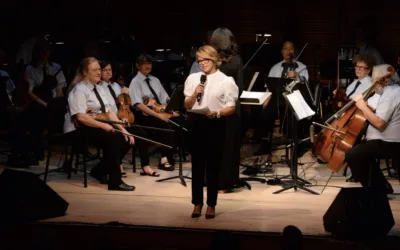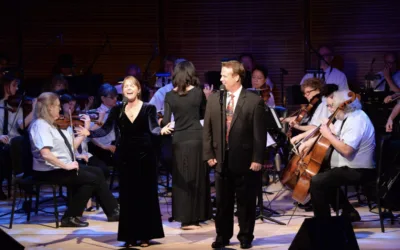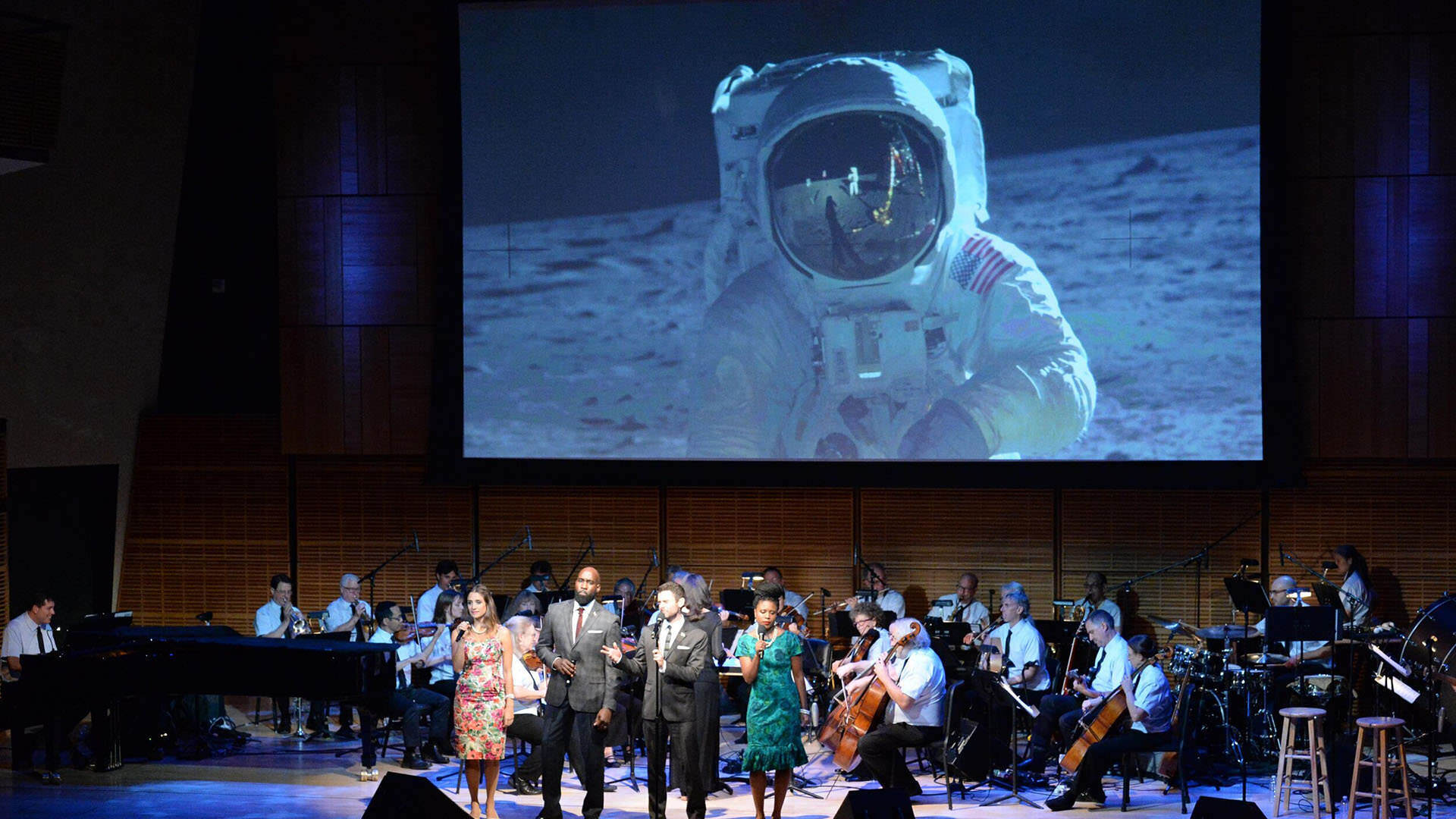
We Chose to Go to the Moon
Carnegie Hall presented We Chose to Go to the Moon in 2019—a music and multimedia presentation, commemorating the 50th anniversary of the Apollo 11 moon landing.
On July 20, 1969, American astronauts Edwin “Buzz” Aldrin and Neil Armstrong became the first people to ever land on the moon. The moment when Armstrong took the first moon walk will be forever remembered as “one small step for man, one giant leap for mankind.” The Apollo 11 landing took place eight years after President John F. Kennedy first challenged the country to land a man on the moon by the end of the 1960s, conquering space as a new frontier. “We choose to go to the moon in this decade and do the other things, not because they are easy, but because they are hard, because that goal will serve to organize and measure the best of our energies and skills, because that challenge is one that we are willing to accept, one we are unwilling to postpone, and one which we intend to win..." he later said in 1962.
Presented fifty years to the exact days when Apollo 11 launched into space, and when it landed on the moon, the production at Zankel Hall brought to life the incredible risks, excitement, and drama in the tension-filled mission control room, as well as the anxiety and excitement of the lunar landing, during one of the most turbulent decades in American history.
Kimberly Grigsby (Music Director, Broadway’s To Kill a Mockingbird) conducted the Orchestra of St. Luke’s and top Broadway vocalists in musical selections inspired by America’s race to space—including David Bowie’s “Space Oddity,” Alexander Courage’s theme from Star Trek, favorites by Paul Simon and Elton John, and more. Rare footage from NASA, including iconic photographs and archival interviews with astronauts and their families are woven together by historian John Monsky in this powerful and immersive event. Mark Armstrong, made a special appearance paying tribute to his father, Neil, with Katie Couric offering a rousing and personal introduction.
“The story of the space race isn’t just about going to the moon; it’s about what was happening on the ground too, during one of the most tumultuous times in America’s history. Carnegie Hall is an incredible platform to highlight the sacrifices of the astronauts’ wives and their families, the brilliance of the engineers in the mission control, and the female 'computers' and 'hidden figures' at the same time Neil Armstrong was taking his giant steps,” says John Monsky.
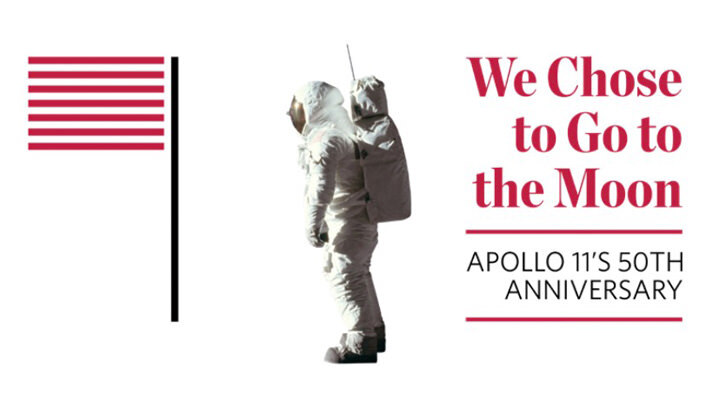
Carnegie Hall | 2019
Zankel Hall | Featuring Shonica Gooden, Adam Kantor, Elena Shaddow and David St. Louis, and hosted by acclaimed journalist Katie Couric. Photos by Fadi Kheir.
A video is being shown

